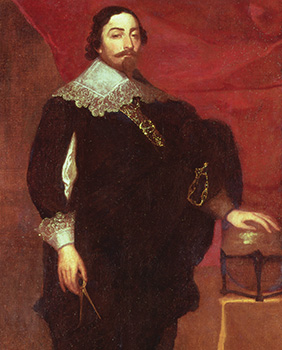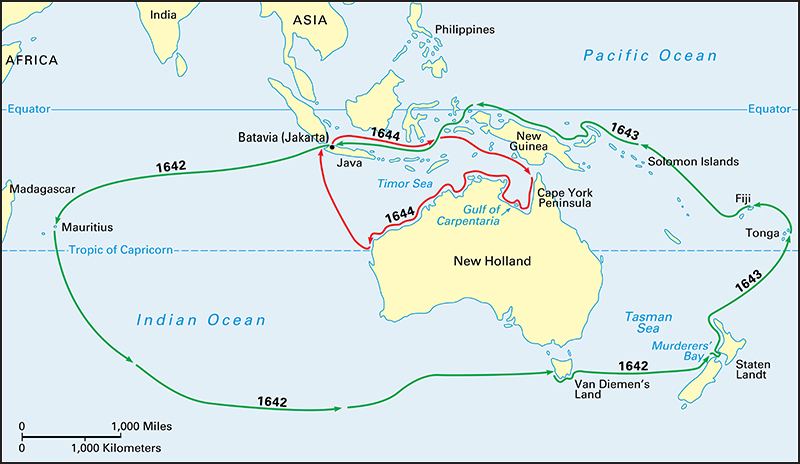Tasman, Abel Janszoon << TAZ muhn, AH buhl YAHN sohn >> (1603?-1659), was a Dutch explorer. As a navigator employed by the Dutch East India Company, Tasman sailed around the South Pacific Ocean. In 1642, he led the first European expedition to reach the island now called Tasmania. Tasman and his crew were also the first Europeans to sight the land now called New Zealand.

Historians believe that Tasman was born about 1603, in Lutjegast, the Netherlands, near Groningen. Little is known about his childhood and early adulthood. In the early 1630’s, Tasman began working for the Dutch East India Company, a trading company. In 1634, he sailed on a voyage to Formosa (now Taiwan). Later that year, he was given his first command of a company ship.
In 1639, Tasman led a voyage to explore the North Pacific Ocean. This expedition reached Japan and the Philippines. It also brought Tasman to the attention of Anthony Van Diemen, the governor general of the Netherlands Indies (now Indonesia). Van Diemen asked Tasman to lead an expedition in search of a great continent thought to lie south of Asia, and Tasman agreed. Europeans referred to this great southern continent as Terra Australis Incognita (Unknown Southland).
In August 1642, Tasman sailed southwest from the island of Java (now part of Indonesia) to Mauritius, off the east coast of Africa in the Indian Ocean. He then turned southeast, toward the continent now called Australia. However, bad weather forced Tasman to sail completely around Australia without sighting it. In November, Tasman saw mountains on the coast of what is now called Tasmania. He officially claimed the land for the Netherlands on December 3, and named it Van Diemen’s Land.

Continuing eastward, Tasman sighted the South Island of New Zealand. His ship anchored at a bay on the north end of the island. After a violent encounter with a Māori group, Tasman sailed to the North Island of New Zealand. From there, he traveled northeast and sighted the Tonga and Fiji island groups. He returned to the Netherlands Indies in June 1643. At the end of his journey, Tasman was unable to confirm the existence of a great southern continent.
Tasman made a second voyage to the South Pacific in 1644. On this expedition, he sailed eastward from Java and along New Guinea’s southern coast. Tasman then entered the Gulf of Carpentaria on the northern coast of Australia. He continued westward along the coast, becoming the first European to make a continuous exploration of the continent’s northern coast. He named the land New Holland. However, Tasman’s reports were not well received by the Dutch East India Company, because he had not found a shipping route or trading region. As a result, the Dutch lost interest in Australia and made no settlements there.
In 1653, Tasman retired from the Dutch East India Company. He became a successful merchant and landowner in the Netherlands Indies. He died in October 1659.
Van Diemen’s Land was officially renamed Tasmania in 1856. Other geographical features named in Tasman’s honor include the Tasman Sea and New Zealand’s Tasman Bay.
